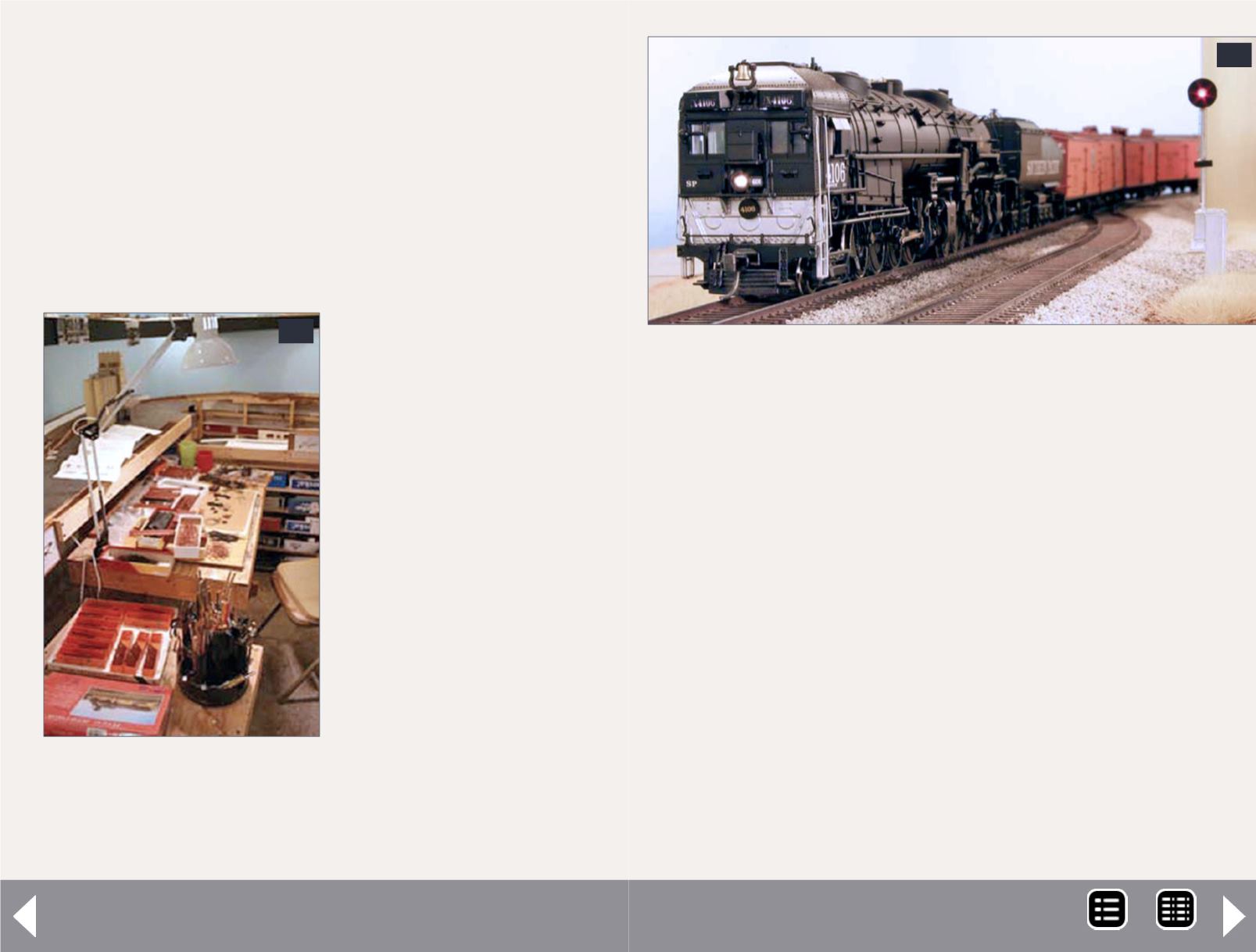
Batch-building freight cars - 9
Step four: Cut out and assemble
Next it’s time to start construction. Starting with the first sub-
assembly, locate all the parts needed. Then cut them off of the
sprues and make little piles of each part. In many cases, cutting
off the parts will take more time than gluing the parts together
but don’t rush this step. Total time to cut out parts in our stock
car build was three hours. 38 minutes.
After you have cut out the parts for a particular subassembly,
put the assemblies together one at a time until all of these par-
ticular assemblies are done.
For this stock car batch proj-
ect, I built the underbodies,
and then I applied weather-
ing to the trucks, wheels and
underbodies. Next I built the
car bodies and applied the
roofs. The last step was to
attach the weathered trucks.
Some subassemblies will
benefit from a bit of initial
weathering. For example,
in order to appear realis-
tic, it is necessary to kill the
shine on the wheels, trucks
and underbody. On the
prototype these parts usu-
ally have varying degrees
of grime on them. When
the underbody is done, but
before mounting the trucks,
paint it flat black (or the
body color, if appropriate
to the prototype) and apply some weathering. Do this even if
the parts are already cast in black plastic, I have found that it is
easier to weather tanks on tank cars before applying the rail-
ings and grabirons. Many modelers airbrush and weather car
roofs before assembly as well. The rest of the weathering will
come after the cars are completed.
Step five: Road test:
With construction complete, it is time to perform a road test.
Check the coupler height with a gauge (you do have a gauge,
right?), and adjust if necessary. Make up a string of the new
cars and run them around the layout for a shakedown cruise.
Watch for wobbles, and note if any cars derail (hopefully
none). If the same car derails more than once, pull it off to the
14: This photo of the
workbench shows all the
subassemblies organized
in boxes.
14
15: A recently assembled string of reefer cars is run
through their paces to determine if adjustments need
to be made. The train usually is run around the layout
a few laps, and then run in reverse to find if any of the
cars need adjustments.
15
MRH-Mar 2014


